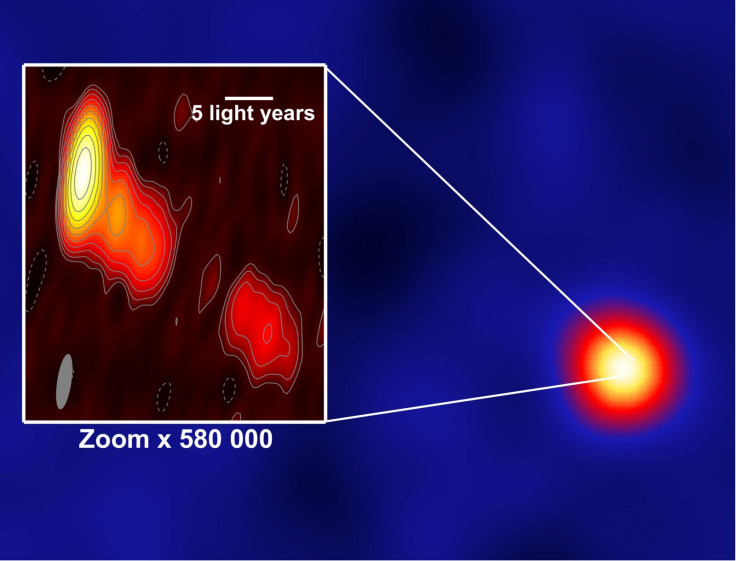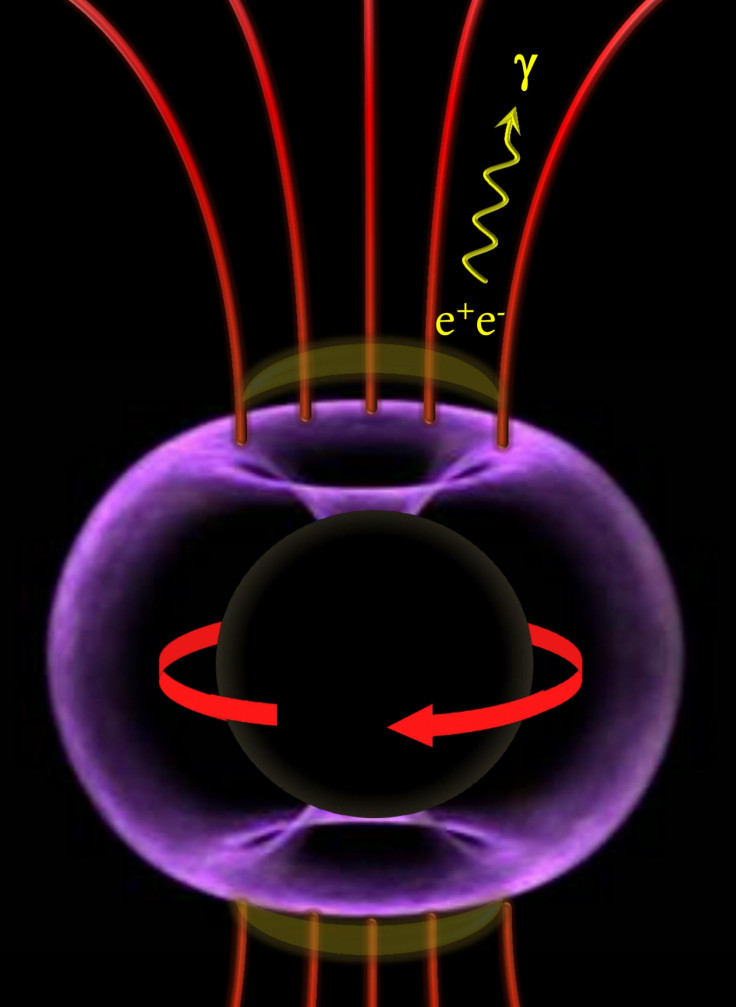Space: First Lightning Flashes From Depths Of Black Hole Detected

An international team of researchers has reported seeing the first "lightnings" or flashes from a black hole with variations in brilliance more powerful than ever observed before.
Gamma ray eruptions from the centre of the IC 310 Radio Galaxy in the Perseus constellation were detected by the telescope MAGIC at La Palma Island, with complementary images from the European VLBI Network (EVN).
The galaxy which is 260 million light years away from Earth is believed to hold a supermassive black hole at its centre.

The eruptions are associated with particle acceleration by the electric field across a magnetospheric gap at the base of the radio jet, suggest the scientists.
The event horizon of the black hole from which nothing can escape is three times longer than the distance of the sun from earth and light needs 25 minutes to cover that distance.
The flashes seen at five minute intervals from IC 310 suggest the gamma rays come from much lower than the event horizon of the black hole.
This means the astronomers have managed to observe the IC 310 galaxy in even more detail than the size of its black hole.
Matter falling into a black hole produces light flashes across the spectrum of wavelengths. The jets seen in the study are gamma rays resulting from interaction of fundamental particles matter expelled from the poles at relativistic speed by the huge electric fields around the black hole.
"We can imagine this process as a fierce electrical thunderstorm," said Eduardo Ross, researcher from the Max Planck Institute for Radioastronomy and the Universitat de València.
Every few minutes an electrical discharge is produced that affects regions of our solar system too. Hence, it is possible for the particles to shoot at speeds close to that of light, within the jet, where they will be accelerated, stopped, re-accelerated and finally centrifuged over the limits of the galaxy itself, Ross said.
The telescope MAGIC is located in the Roque de los Muchachos at La Palma and consists of two 17-diameter-metre telescopes able to detect high energy cosmic gamma rays.
The gamma rays produce avalanches of particles when entering the atmosphere and generate a bluish light called Cherenkov radiation, by which MAGIC can study objects in galaxies.
The findings are published in Science.
© Copyright IBTimes 2025. All rights reserved.





















